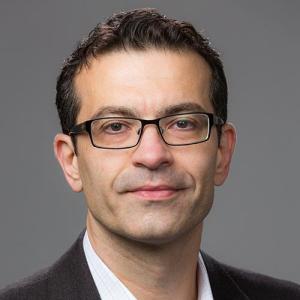
Professor in Cell Biology
Associate Professor in Medicine
Co-Director of the Duke Regeneration Center
Member of the Duke Cancer Institute
Overview
This lab's focus is the development of cell and tissue model systems that enable:
- Systematic approach to studies of cardiac arrhythmias in vitro
- Design of electrically safe cell- and tissue-replacement therapies in vivo
Microfabrication techniques are employed to reconstitute two-dimensional and three-dimensional cardiac tissue substitutes with controllable architecture starting from dissociated cells. These substitutes are intended to mimic the structure of healthy and diseased hearts at multiple organizational levels from single cell to two- and three-dimensional cell networks.
In addition, microfabricated cocultures of cardiac and other cell types are used to simulate and systematically study different scenarios encountered during cellular or tissue cardiomyoplasty in vivo. Immunoassaying and optical recordings with voltage and calcium sensitive dyes in these systems allow for precise correlation between structure and function at microscopic and macroscopic spatial scales, and functional evaluation of engineered tissue before and after possible implantation.
The same methods are employed for analysis of complicated spatio-temporal changes in electrical activity encountered in cardiac arrhythmias and fibrillation.
To aid the experimental design and interpretation of results, the laboratory uses computer models that incorporate:
- Cell-specific ion channels
- Cardiac cell geometry
- Distribution of intercellular connections
- Discrete tissue microarchitecture
Selected Publications
- Bursac N and Tung L. Acceleration of Functional Reentry by Rapid Pacing in Uniformly Anisotropic Monolayers of Cardiac Myocytes: Formation of Novel Multi-Wave Functional Reentries, Cardiovascular Res, Vol. 69(2), p. 381-90, 2006.
- Pedrotty D and Bursac N, Cardiomyoplasty: Prospect of Human Stem Cells, IEEE Engineering in Medicine and Biology Magazine, Vol. 24(3), p. 125-7, 2005.
- Bursac N, Aguel F, Tung L. Multi-arm Spirals in a Two-Dimensional Cardiac Substrate, PNAS, Vol 101(43), p. 15530-15534, 2004.
- Bursac N, Papadaki M, White JA, Eisenberg SR, Vunjak-Novakovic G, Freed E. Cultivation in Rotating Bioreactors Promotes Maintenance of Cardiac Myocyte Electrophysiology and Molecular Properties. Tissue Engineering9(6):1243-53, 2003.
- Bursac N, Parker K, Irvanian S, Tung L. Cardiomyocyte Cultures with Controlled Macroscopic Anisotropy: A Model for Functional Electrophysiological Studies of Cardiac Muscle. Circulation Research91:e45-54, 2002.
- Papadaki M, Bursac N*, Langer R, Merok J, Vunjak-Novakovic G, Freed LE. Tissue Engineering of Functional Cardiac Muscle: Molecular, Structural and Electrophysiological Studies. American Journal of Physiology 280 (Heart and Circ Physiol) (*equally contributing authors), 2001.
Faculty
Nenad Bursac, PhD, Director
Contact Information
Office: CIEMAS 1141, Durham, NC, 27708
Campus mail: DUMC Box 90281, Durham, NC, 27708-0281
Phone: 919-660-5510
For more information visit the Bursac Lab Web site.